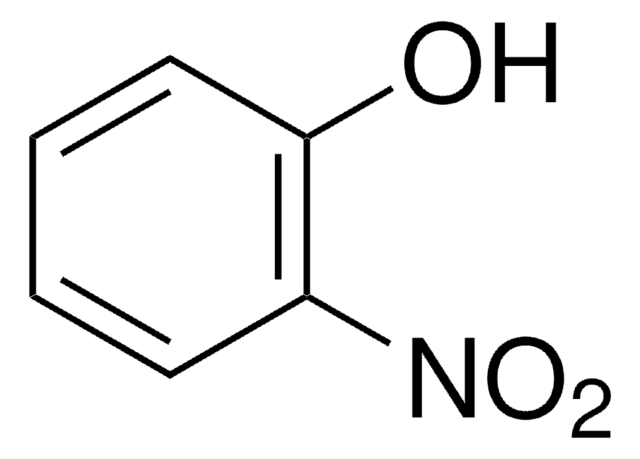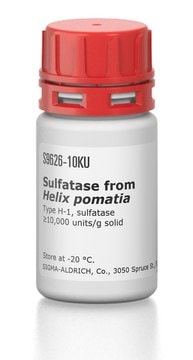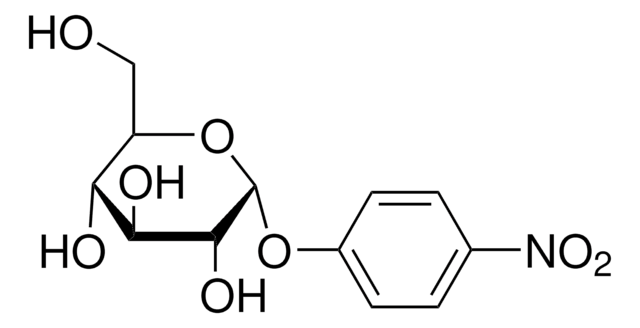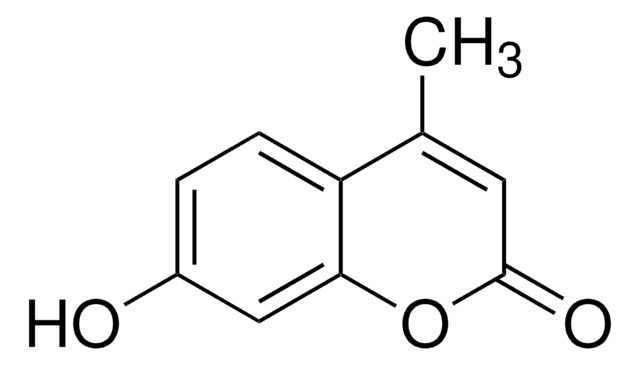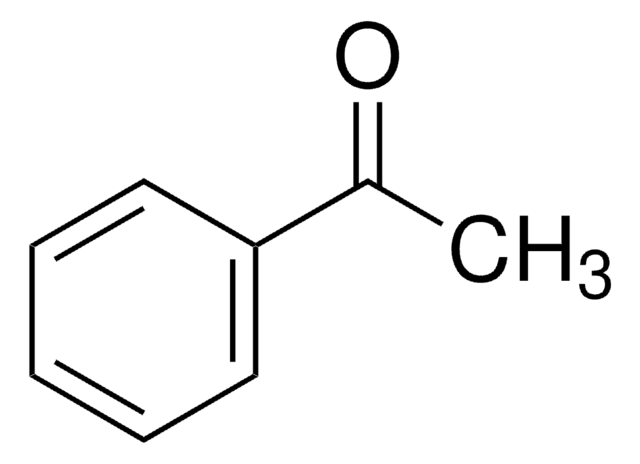Kluczowe dokumenty
48549
4-Nitrophenol
Synonim(y):
p-Nitrophenol
About This Item
Polecane produkty
klasa czystości
analytical standard
ciśnienie pary
0.6 mmHg ( 120 °C)
Certyfikat analizy
current certificate can be downloaded
temp. samozapłonu
541 °F
opakowanie
ampule of 5000 mg
metody
HPLC: suitable
gas chromatography (GC): suitable
tw
279 °C (lit.)
mp
110-115 °C (lit.)
rozpuszczalność
H2O: soluble 15 g/L
Zastosowanie
environmental
format
neat
temp. przechowywania
2-30°C
ciąg SMILES
O=N(C1=CC=C(O)C=C1)=O
InChI
1S/C6H5NO3/c8-6-3-1-5(2-4-6)7(9)10/h1-4,8H
Klucz InChI
BTJIUGUIPKRLHP-UHFFFAOYSA-N
informacje o genach
human ... UGT1A4(54657)
Szukasz podobnych produktów? Odwiedź Przewodnik dotyczący porównywania produktów
Zastosowanie
Hasło ostrzegawcze
Warning
Zwroty wskazujące rodzaj zagrożenia
Zwroty wskazujące środki ostrożności
Klasyfikacja zagrożeń
Acute Tox. 4 Dermal - Acute Tox. 4 Inhalation - Acute Tox. 4 Oral - STOT RE 2 Oral
Organy docelowe
Kidney,Liver
Kod klasy składowania
6.1C - Combustible acute toxic Cat.3 / toxic compounds or compounds which causing chronic effects
Klasa zagrożenia wodnego (WGK)
WGK 2
Temperatura zapłonu (°F)
336.2 °F - closed cup
Temperatura zapłonu (°C)
169.0 °C - closed cup
Środki ochrony indywidualnej
dust mask type N95 (US), Eyeshields, Faceshields, Gloves
Wybierz jedną z najnowszych wersji:
Masz już ten produkt?
Dokumenty związane z niedawno zakupionymi produktami zostały zamieszczone w Bibliotece dokumentów.
Klienci oglądali również te produkty
Nasz zespół naukowców ma doświadczenie we wszystkich obszarach badań, w tym w naukach przyrodniczych, materiałoznawstwie, syntezie chemicznej, chromatografii, analityce i wielu innych dziedzinach.
Skontaktuj się z zespołem ds. pomocy technicznej

